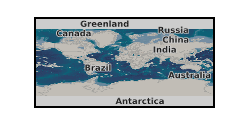.m file
Type of resources
Topics
Keywords
Contact for the resource
Provided by
Years
Formats
Update frequencies
-

A number of processes, both natural and anthropogenic, involve the fracture of rocks subjected to tensile stress, including vein growth and mineralization, and the extraction of hydrocarbons through hydraulic fracturing. In each case, the fundamental material property of mode-I fracture toughness must be overcome in order for a tensile fracture to nucleate and propagate. Whilst measuring this parameter is straightforward at ambient pressure, estimating the fracture toughness of rocks at depth, where they experience a confining pressure, is technically challenging. Here, we report a new analysis combining results from standard thick-walled cylinder burst tests with quantitative acoustic emission to estimate the mode-I fracture toughness (KIc) of Nash Point Shale at elevated confining pressure, simulating in-situ conditions to approximately 1km. In the most favorable orientation, the pressure required to fracture the rock shell (injection pressure, Pinj) increases from 6.1 MPa at 2.2 MPa confining pressure (PC), to 34 MPa at 20 MPa confining pressure. When fractures cross the shale bedding, the required injection pressures are 30.3 MPa (at Pc = 4.5 MPa) and 58 MPa (at Pc = 20 MPa), respectively. Applying the model of Abou-Sayed (1978) to estimate initial flaw size, we calculate that this pressure increase equates to an increase in KIc from 0.6 MPa.m1/2 at 3.2 MPa differential pressure (Pinj - PC) to 4.1 MPa.m1/2 at 22 MPa differential pressure. We conclude that the increasing pressure due to depth in the Earth will have a significant influence on fracture toughness, which is also a function of the inherent anisotropy.
 BGS Data Catalogue
BGS Data Catalogue